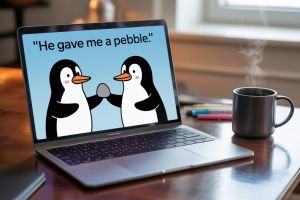 AI-based services for all: AI chatbots and platforms for children
AI-based services for all: AI chatbots and platforms for children
In terms of relationships between older and younger generations, recent human history tends to repeat itself. Specifically, each new generation experiences something that the previous one did not: movies, television, computers, the Internet, and so forth. At present, this "something" is AI: parents didn't have access to it, while their children are as familiar with LLM-powered chatbots as one can be.
On a broader scale, it's neither inherently good nor bad — it's progress, and it's unstoppable. On a more practical level, it's a double-edged sword, with both positive and negative aspects. Simply put, by using AI, kids can obtain answers to their questions more quickly and in a more digestible format, but those responses can sometimes be inaccurate, and there's always a risk of encountering inappropriate content.
This challenge was recognized by the creators of artificial intelligence models; their response was to develop chatbots and AI-driven educational platforms specifically tailored for children (and teenagers, for that matter). This article presents seven of these bots and platforms, some general-purpose, others specialized.
1. Google Gemini for Kids
Google's Gemini AI is an all-purpose artificial intelligence chatbot tailored to the needs of kids under 13. Accessible through supervised accounts via Google Family Link, it can help with homework, creative writing tasks, and simply be the source of answers to the myriads questions children of this age have.
Google Gemini for Kids: pros and cons
- Flexible parental controls and supervision tools.
- Learn, create, communicate – an all-in-one platform.
- Potential risk of misinformation and some exposure to inappropriate content.
- Dependence on parental oversight, with unclear effectiveness of built-in safeguards.
2. LittleLit AI Chatbots for Kids
LittleLit is a family of proprietary, child-safe AI chatbots that support children as they learn to write, calculate, create art and music, and simply explore the world around them. The models are trained on K-12 curricula, and the content is pre-moderated before being delivered to kids. The chatbots communicate with children in a language they understand, using an empathetic tone.
LittleLit AI Chatbots: pros and cons
- Tailored to children's needs and cognitive abilities.
- Presumably completely safe thanks to the pre-moderation policy.
- Emphasizes both academic and emotional growth.
- Limited to English and specific curricula.
3. Kidgeni
Kidgeni is a creative AI platform where children can prompt models to generate art, stories, and books. It also features a doodling tool that transforms stick figures into knights and clusters of ellipses into adorable cats. The chatbots have different age tiers, ranging from under 3 to over 13.
Kidgeni: pros and cons
- User-friendly interface with tools like narration of the generated stories.
- A totally safe environment for kids to experiment.
- Weak to non-existent academic content.
- Paid subscriptions only (as of this writing).
4. Khan Academy Kids
Khan Academy Kids is a free (and ad-free) educational platform designed for children aged 2 to 8 years. It is a comprehensive set of AI-powered adaptive curricula that teach literacy, math, language, creativity, and social-emotional skills. There are over 5,000 interactive lessons, games, and books available in the Academy, making it one of the top resources of the kind.
Khan Academy Kids: pros and cons
- Offers personalized learning paths to suit the needs of every child.
- Arguably the broadest coverage of early education topics.
- Less AI-driven communication, more scripted interactions.
- Best suited for younger children.
5. Prodigy Education
The Prodigy learning platform is evolving: it started out as Prodigy Math, and currently has English on board, too. No doubt the amount of content and range of topics covered will only be growing in the future, since the platform, free for teachers and paid for parents, is one of the most popular solutions of this kind in North America.
Prodigy Education: pros and cons
- Engaging gamified learning process, never boring.
- Adaptive algorithms that keep the games fun and challenging but not off-putting.
- Strong curriculum alignment.
- No AI involvement in sight apart from the mentioned game adaptation.
6. Duolingo ABC
Duolingo has announced itself to be an AI-first company in terms of content generation. Its ABC project, while obviously relying on large language models for routine operations, is designed to teach children to read and write, which means the lessons and games (games, primarily) in the platform have all been checked manually by experts.
Duolingo ABC: pros and cons
- Gamified reading lessons from one of the leading educational companies in the world.
- Adaptive personalized contents of lessons.
- Totally free with some optional premium features.
- Not all-purpose and too shallow for advanced learners.
7. Scratch
There's no AI on the surface of Scratch, but we simply couldn't omit it from the list of children's education resources. Conceived at MIT as a visual programming language for kids (think blocks), it is currently a fully-fledged educational platform that lets kids create games and stories and share them with the world. The underlying learning aspect is there, of course, and AI is part of the curriculum.
Scratch: pros and cons
- Teaches coding and problem-solving in a fashion liked by children.
- Free, available in dozens of languages, and widely used in education.
- There is some learning curve that may call for assistance
Anything we should add to this list? Share your favorite child-friendly AI platform or bot in the comments!



